Joe Pye Weed – How to Grow and Use It
Joe Pye weed is a great native plant to add to your butterfly garden, and it also has a history of medicinal use. We'll share where to find it, how to grow it, and historical uses of this flowering plant.
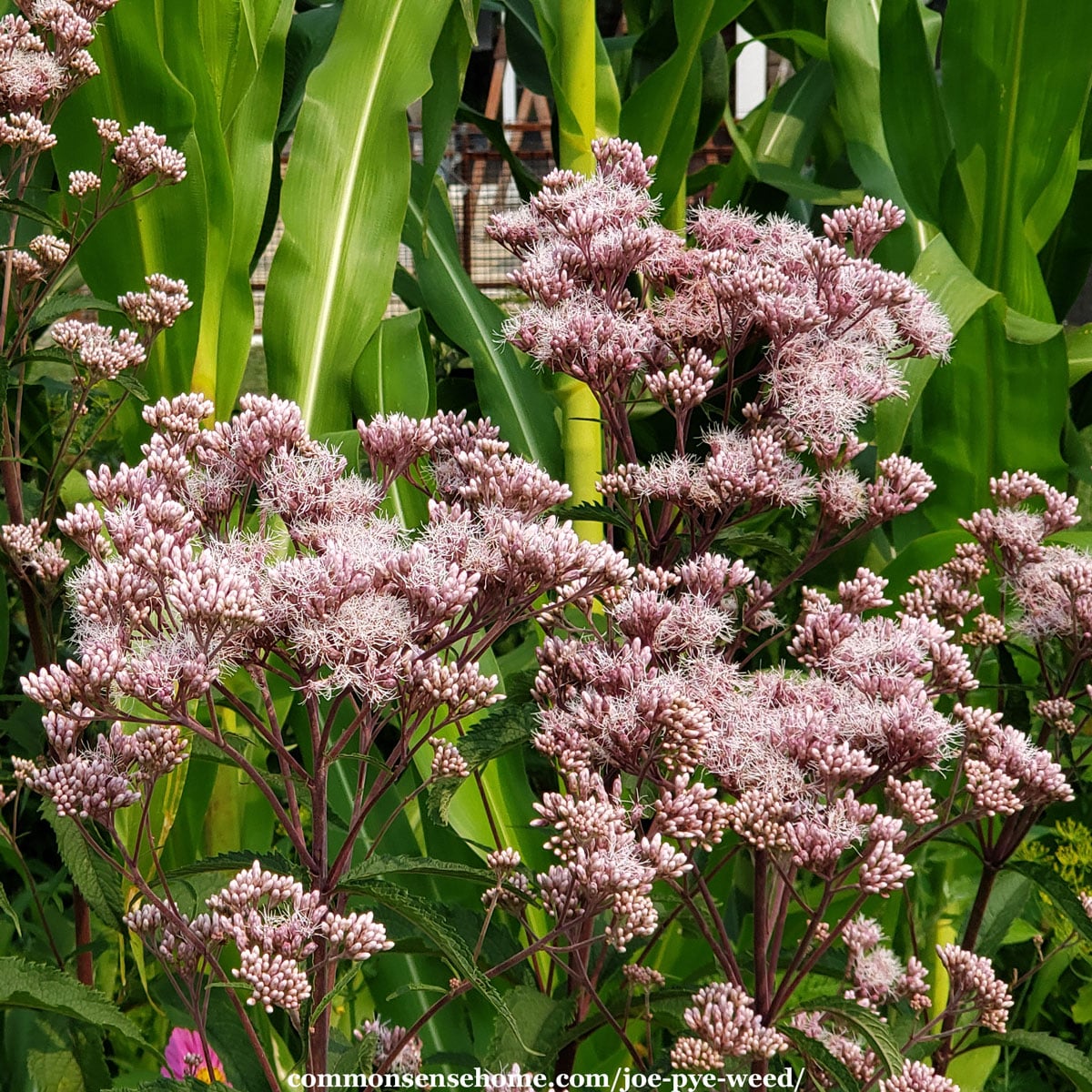
The photos in this post are Eutrochium maculatum, which is also known as spotted Joe Pye Weed, spotted trumpet weed, or purple boneset.
Other species include:
- Coastal plain joe pye weed – Eutrochium dubium
- Hollow joe pye weed – Eutrochium fistulosum
- Sweet joe pye weed – Eutrochium purpureum (flowers have a vanilla scent)
- Appalachian Joe-Pye weed – Eutrochium steelei
These plants take their names from a medicine man named Joe Pye, who used them to cure typhus in New England in the early 1800s. Other common names include queen of the meadow, gravel root, and kidney root.
Growing Joe Pye Weed
Joe pye weed grows in moist soil and full sun. It tolerates “wet feet” (growing in standing water) for short periods of time. In warmer locations, partial shade protects the plants from intense heat. Too much shade makes the plants floppy and increases risk of disease.
The Eutrochium species are North America natives. In the wild, you'll find them along streams and in wet ditches. (Elderberry and jewelweed also like the same conditions.)
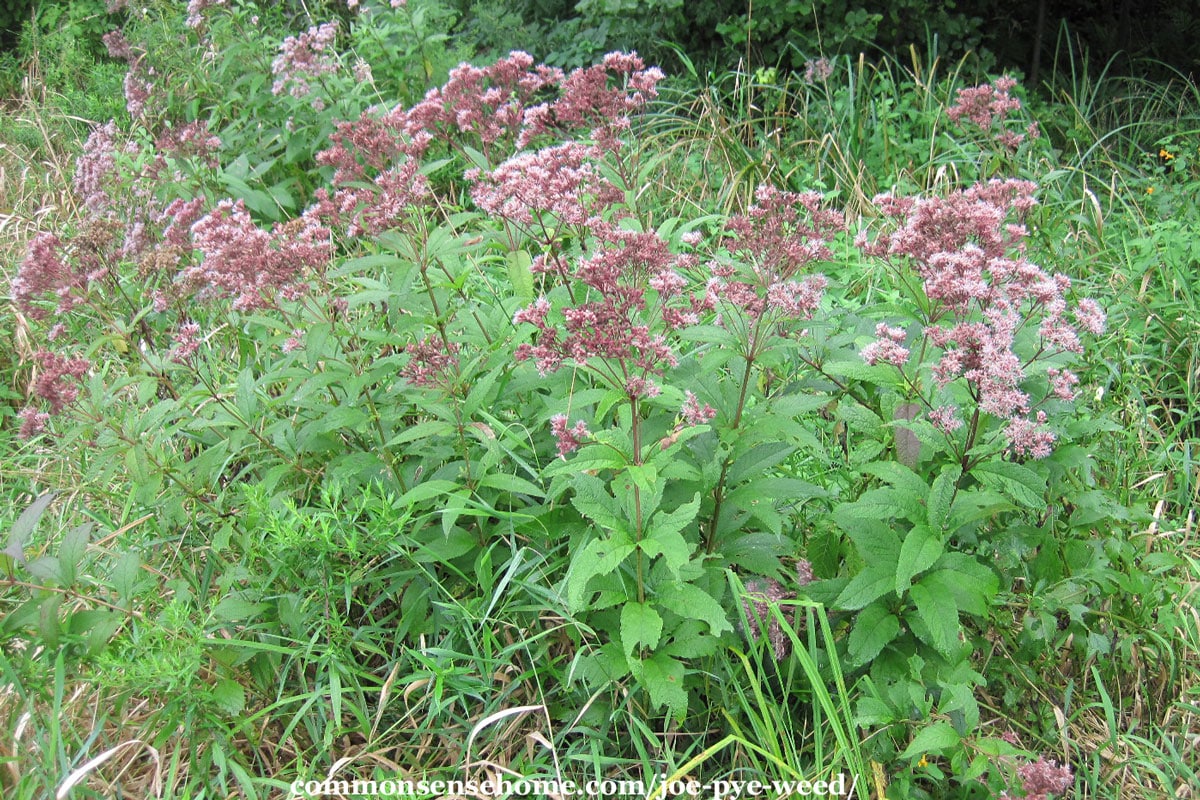
Whorled leaves surround the stem in groups of 3-5 leaves. The leave are coarsely toothed and lance shaped, about 3-9 inches long.
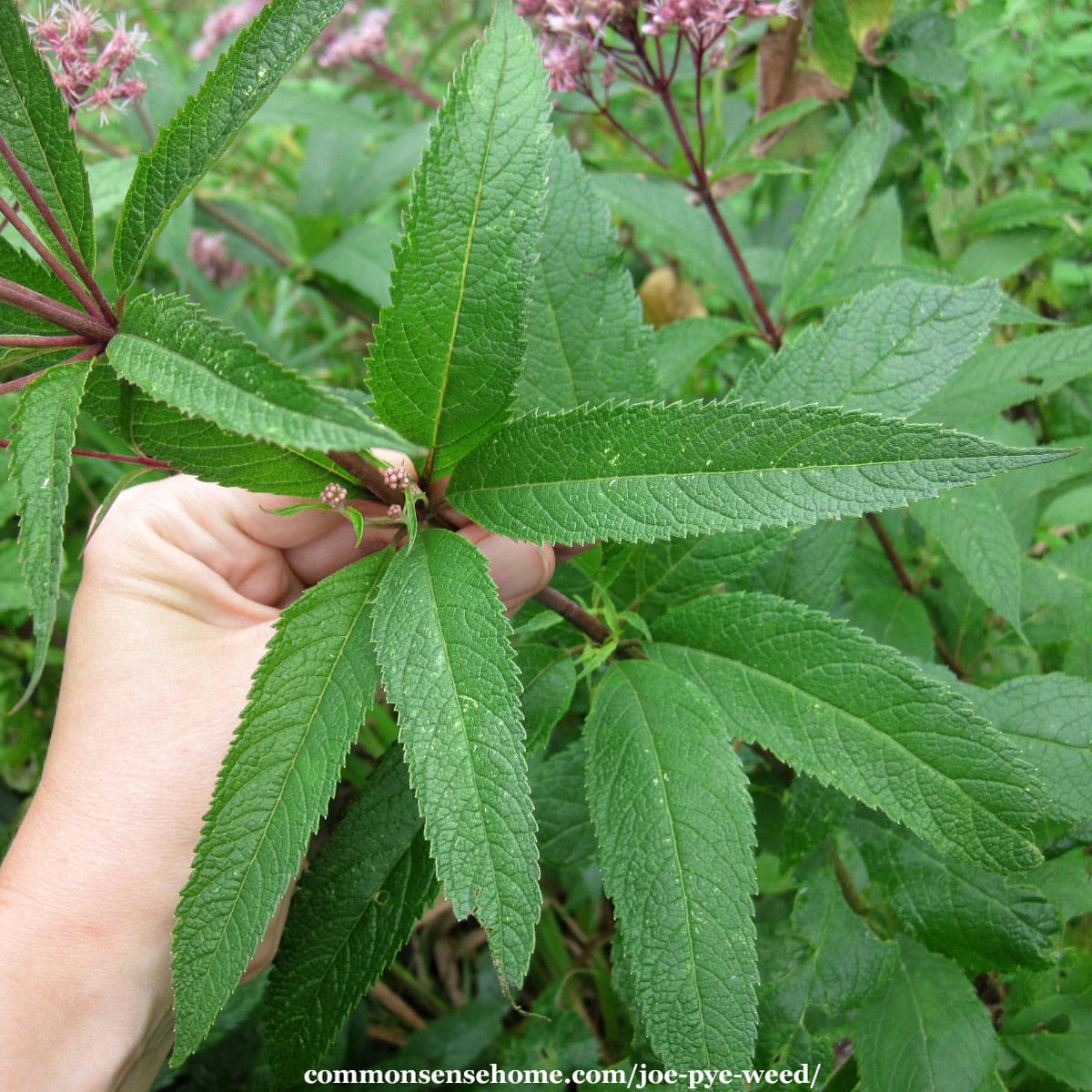
Joe Pye weed blooms during late summer into autumn, until hard frost. This is great because they provide nectar when many other plants have already finished blooming.
The pinkish-purple flower heads grow in large clusters on the top of the plant (like elderberries), 5-10″ across. These flower clusters contain hundreds of individual flowers, 1/4″ wide.
If you want to propagate a plant from a wild plant, mark the plant in late summer, while it's blooming. Then, come back in spring and use a sharp shovel to divide off a section of the plant. Replant at the same soil depth in similar growing conditions.
When and Where to Plant
The best soil is rich and moist, with adequate drainage. They tolerate clay soil and occasional standing water. Plant in spring, after danger of frost is past.
Joe Pye weed plants grow up to 2-10 feet tall, so plan for them as a focal point or backdrop in your garden. They are perennials, so they'll come back year after year.
They are not invasive, but they do spread over time, so give them room to grow. Mature size reaches 2-4 feet across. You can divide plants in early spring to reduce their size. (Share them with a gardening friend if you have extra plants!)
Care
As a native plant, Eutrochium species are fairly low maintenance. Keep them from drying out (organic mulch helps to retain moisture).
With good soil, they'll thrive without fertilizer. If you soil is lacking, top dress with compost in spring, once new growth emerges.
Sometimes the plants develop powdery mildew, a fungal disease, when there is poor air flow and damp weather. Trim off the heavily infected leaves, and spray with an anti-fungal treatment if desired.
A simple treatment for powdery mildew is one part milk to 3 parts water. For instance, 1 cup milk and 3 cups water. Spray the leaves in the morning, every 10-14 days.
The plants are hardy for USDA zones 4-9, but die back after hard frost. You can leave the seed heads for visual interest during winter, or cut them back after frost. It's best to clear them out before new growth starts in spring to keep the plant tidy.
Deadheading the plants in fall helps to keep them from going to seed and spreading where you don't want them to grow.

What is Joe Pye Weed good for?
The abundant flowers of Joe Pye weed are attractive to many species of butterflies. As a general rule, when you see those big, flat flower heads with lots of small blossoms on any plant, odds are that it's attractive to butterflies. (Milkweed and yarrow are other good examples.)
Deer rarely eat the plants, so they may be a good landscape choice if you have only light deer pressure.
Crafters use the plant as a natural dye for yarn and fabrics. It imparts a golden color.
If your patch is vigorous, you can gather and dry the stems and leaves to bundle and burn as a natural mosquito repellent.
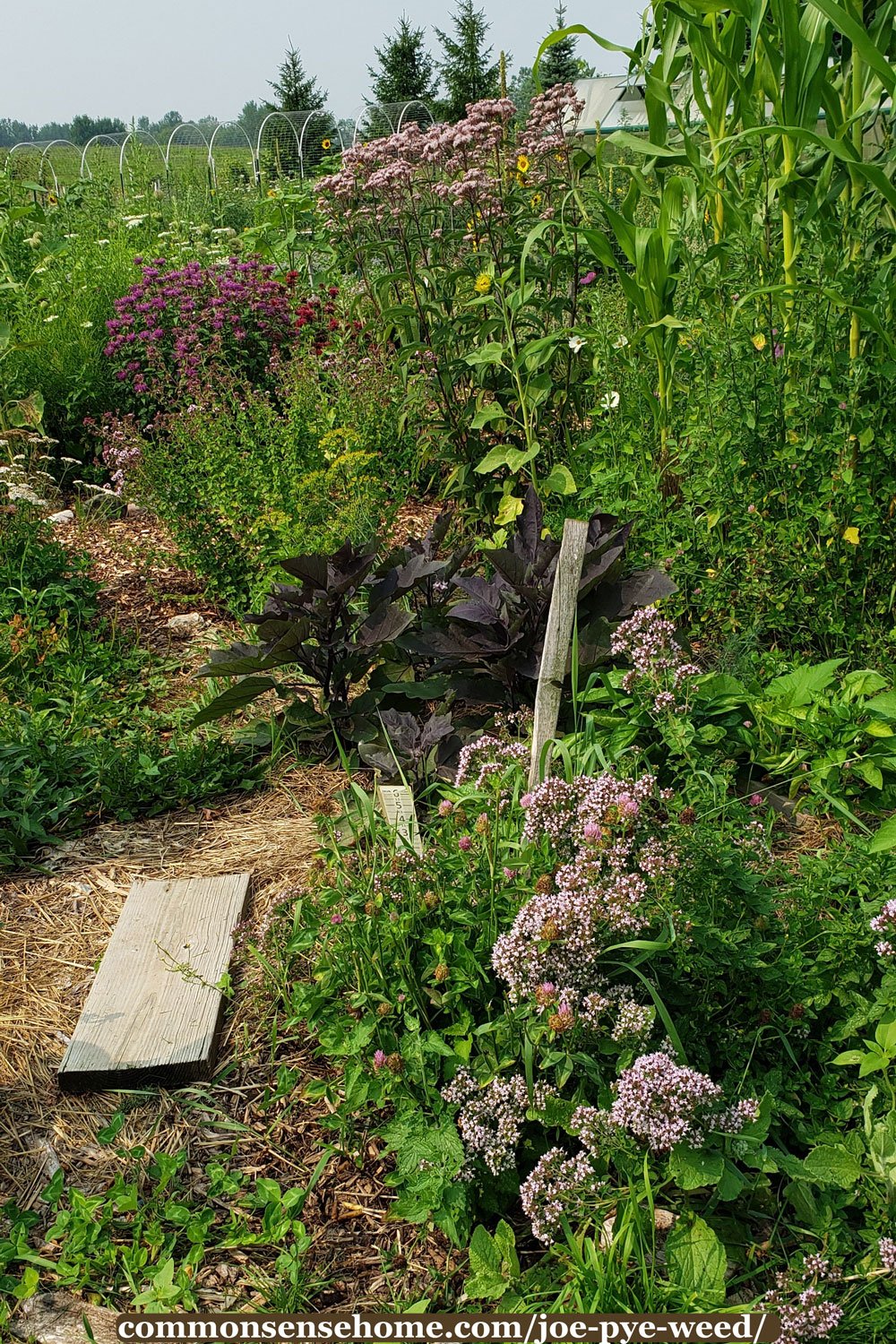
Medicinal Use of Joe Pye Weed
Joe Pye weed has a long history of medicinal use. It's most commonly used as a diuretic, but has also been used for other conditions, such as:
- Urinary tract issues, including kidney stones
- Joint stiffness, including gout and rheumatism
- Reproductive issues
- Diabetes
Tea can be prepared using the roots, leaves, or dried flowers.
Gather leaves in summer, before the flower buds open. Pick the flowers when they are in full bloom. Harvest the roots in fall, and chop and dry them for storage. (See Home Food Drying for more information on dehydrating.)
To prepare Joe Pye Weed root tea, steep 1 ounce dried and crushed root in 1 pint of boiling water for 30 minutes and drink ½ cup at a time.
Prepare Joe Pye Weed flower or leaf tea by pouring 8 ounces of boiling water over 1 teaspoon dried flowers or leaves. Cover and let steep for 10 minutes. Strain out flowers or leaves and sweeten with a little honey, if desired.
This plant contains unsaturated pyrrolizidine alkaloids, which can be toxic to the liver in excess. It is not recommended for long term use or large doses. Do not use if pregnant or nursing. Avoid use with children.
This post is for general information only, and should not replace a healthcare provider. Always exercise caution when using any wild plants, and make sure you have positively identified the plant.
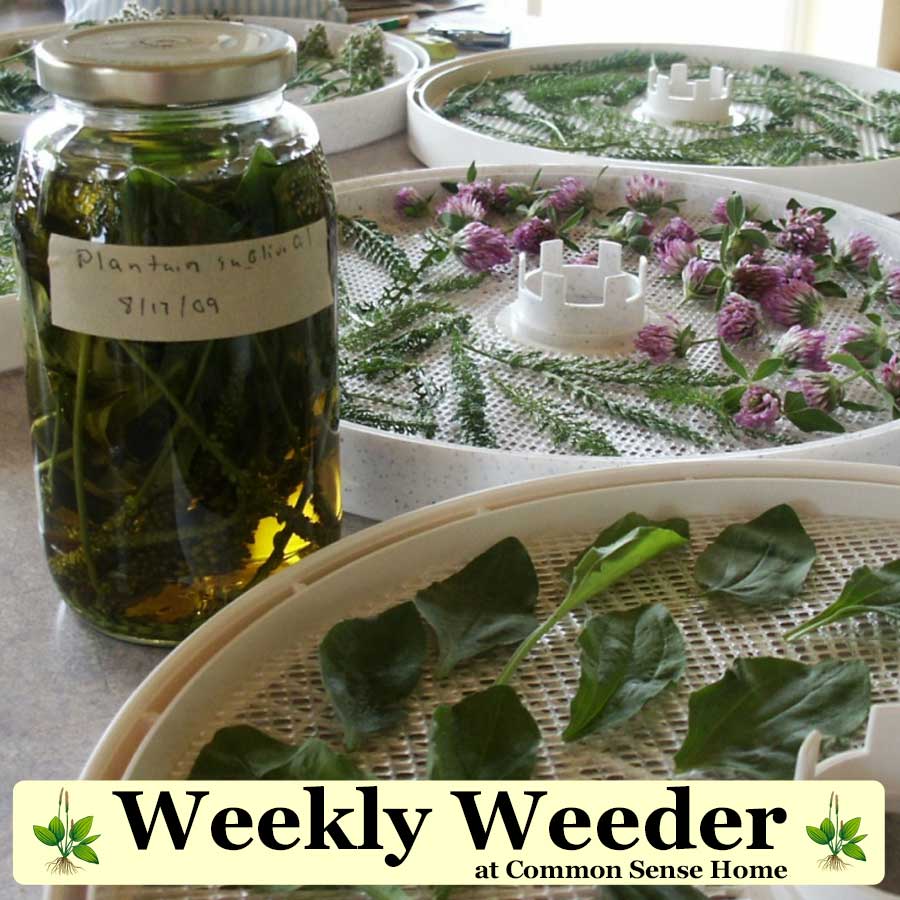
More Information on Wild Plants
This post is part of the Weekly Weeder series, which provides information on wild plants. (Some of which also do well in the garden.)
Other posts in the series include:
Stinging Nettle – One of Most Useful Wild Plants
Benefits of Dandelion, Plus How to Use Greens, Seeds, Roots & Flowers
Chicory – The Coffee Root Plant
References
Edible and Medicinal Wild Plants of the Midwest
Originally published in 2012, last updated in 2021.


This has randomly shown up in 2 of my gardens this summer. I didn’t know what it was. I’ve been having joint pain so it seems my garden (and God) know what I need. Thanks for showing this.
I hope it helps.
Your story reminds me of another story.
One of the first times I went foraging with a friend, we gathered mullein, which is use for ear and respiratory issues. We got permission from the landowner, who didn’t want the “weeds” anyway. When talking to the landowner, we found out that he had had chronic ear issues. Too bad he wasn’t willing to learn more about the medicine right outside his door.
Any further news on Joe Pye’s toxicity to pets?
The article “Plants Poisonous to Your Pets” by Deerfield Veterinary Clinic lists joe pye weed as poisonous, but no specific information is given.
In most cases pets won’t eat plants that are toxic, but of course some will chew on just about anything.
Hi I have the following plant in my garden Eupatorium Riesinschirm is this Joe Pye weed? Is the Eupatorium poisonous to dogs? Thanks
It looks like Eupatorium maculatum ‘Riesenschirm’ is a specific variety of Eupatorium maculatum, so yes, it is Joe Pye Weed.
I looked on three different list of plants that are poisonous to dogs (https://www.aspca.org/pet-care/animal-poison-control/toxic-and-non-toxic-plants/j?page=1, https://www.dogstrust.org.uk/help-advice/factsheets-downloads/factsheetpoisonoussubstances09.pdf and https://wric.ucdavis.edu/PDFs/plants%20reported%20to%20be%20poisonous%20to%20animals.pdf) and Eupatorium maculatum is not listed on any of them.
Thank you! I have a giant plant in my front garden and was wondering if it was safe for goats.
The North American Pack Goat Association notes that goats will eat fresh or dried joe pye weed by the handful. They also have a mention in their December 2009 newsletter that says “I still swear by Joe-Pye Weed AKA Gravelroot (Eupatorium purpureum) for UC prevention and treatment.”